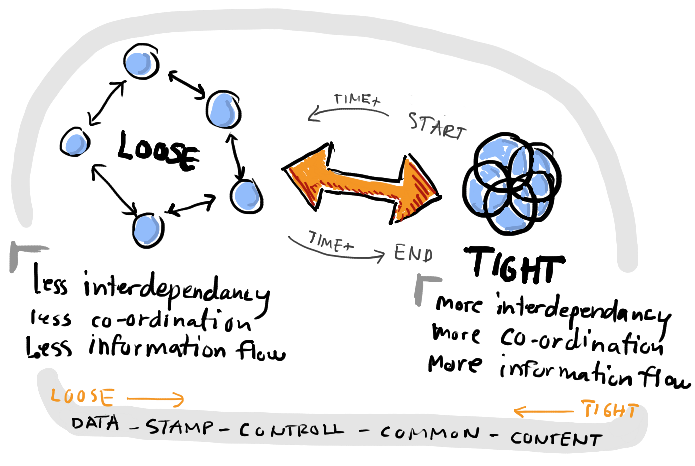Jaydip Trivedi
A blog that describe me, my work, my hobbies n things
Thursday 26 January 2017
Wednesday 26 October 2016
Flipkart Exclusive | Great Diwali Sale | LeEco 138.8cm (55) Ultra HD (4K) Smart LED TV (L553L2, 3 x HDMI, 3 x USB)
Model No. L553L2 Ultra HD Resolution 3840 X 2160 (4K) Smart TV | Flipkart worth Rs.59789
Friday 25 March 2016
Difference between loosely coupled and tightly coupled system
What is a loosely coupled system?
It is a concept of system design and computing where loosely coupled system is one in which every individual component has no knowledge of the definitions of other components.
In another meaning loosely coupled architecture or system means changes in one module / section that affect the other components and every module is somewhat independent of each other.
In a loosely coupled system, hardware and software may interact but they are not dependent on each other.
What is a tightly coupled system?
It is a concept of system design and computing where every hardware and software components that are linked together in such manner that each component is dependent upon each other.
For example, in a tightly coupled system when a dependent class contains a pointer directly to a concrete class which provides the behavior of the object.
Tightly coupled architecture promotes interdependent applications and code.
Tightly coupled architecture is fragile as the minor issue in one segment can bring the whole system down.
Another example of tightly coupled system
Difference:
Tightly coupled system
|
Loosely coupled system
|
|
1
|
It has shared memory concept
|
It has distributed memory concept
|
2
|
Contention is high in tightly coupled
|
Contention is low in loosely coupled
|
3
|
It has low scalability
|
It has high scalability
|
4
|
It has low delay
|
It has high delay
|
5
|
Data rate in tightly coupled system is high
|
Data rate in loosely coupled system is low
|
6
|
Cost of tightly coupled system is high
|
Cost of loosely coupled system is low
|
7
|
It has dynamic interconnection network
|
It has static interconnection network
|
8
|
It operates on Single Operating System
|
It operates on Multiple Operating System
|
9
|
In tightly coupled system cache memory assign according to the need of processing
|
In loosely coupled system, each process have its own cache memory
|
10
|
Throughput is high in tightly coupled
|
Throughput is low in loosely coupled
|
11
|
Security is high in tightly coupled
|
Security is low in loosely coupled
|
12
|
Low space in this architecture
|
High space in this architecture
|
13
|
Power consumption is lower than loosely coupled system
|
Power consumption is higher than tightly coupled system
|
14
|
Not reusable in the case of flexibility
|
Reusable in the case of flexibility
|
15
|
Ex., Zeon processor
|
Ex., Beowulf cluster
|
Subscribe to:
Posts (Atom)






